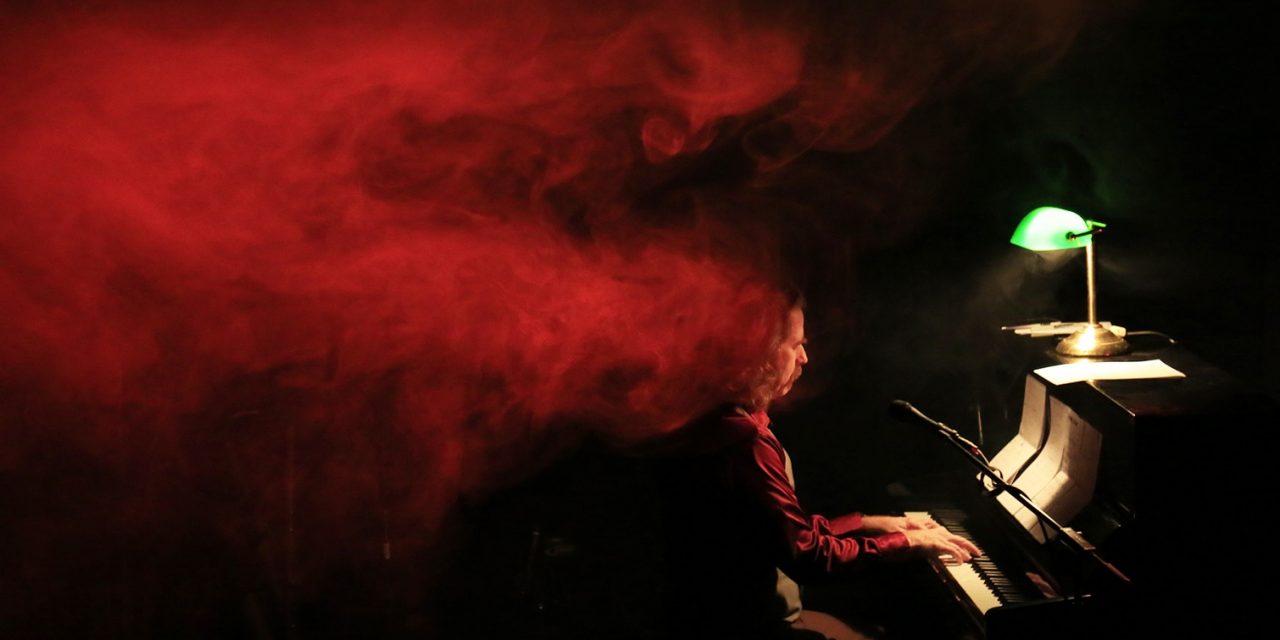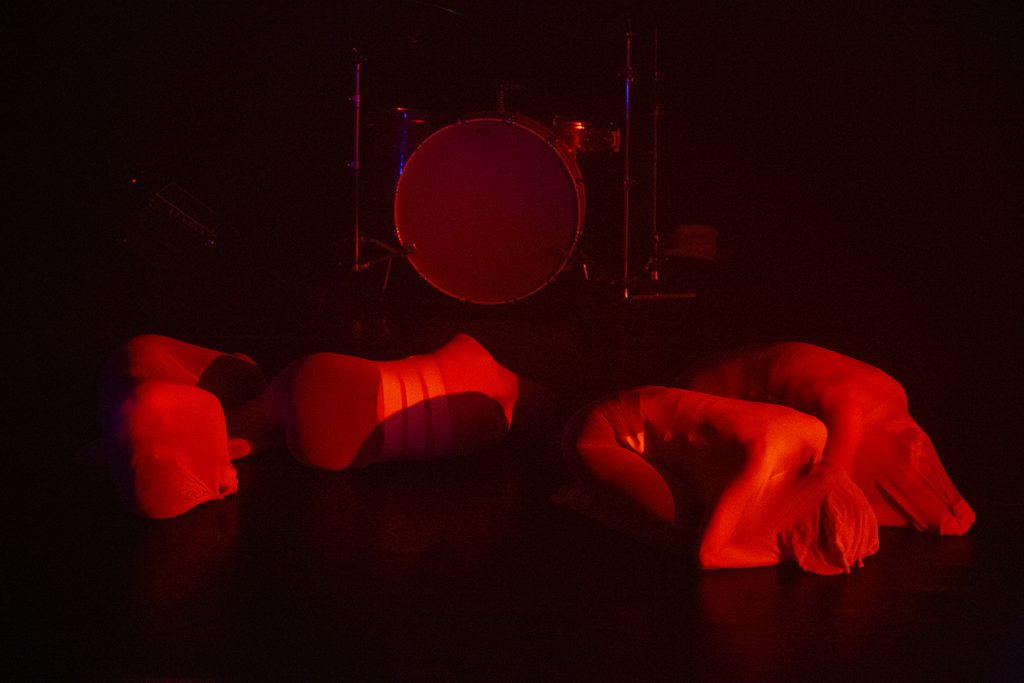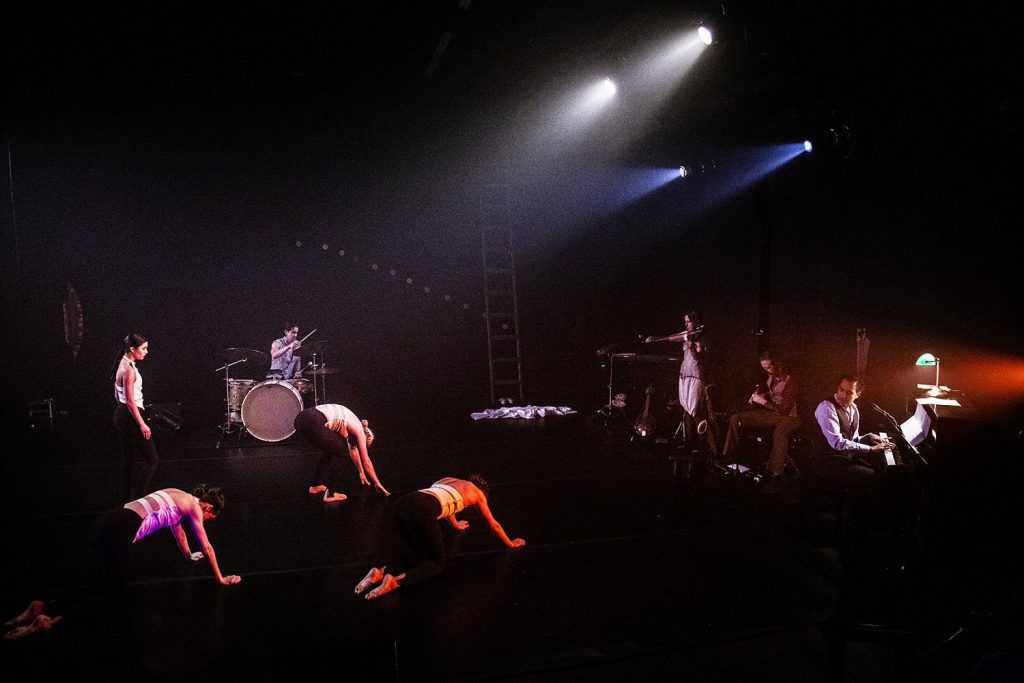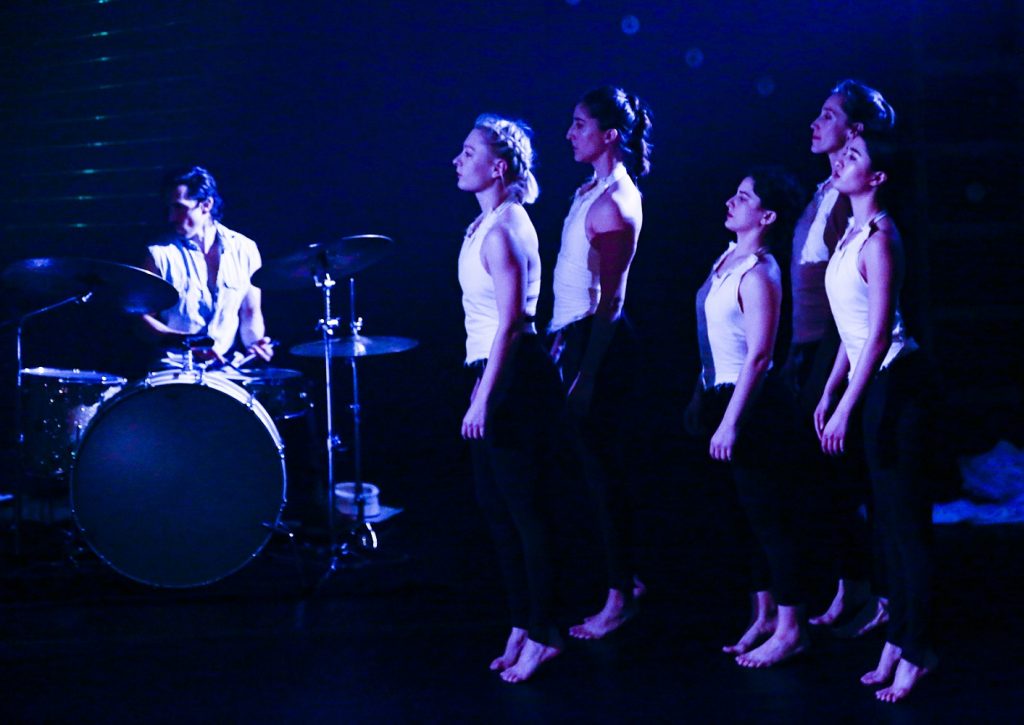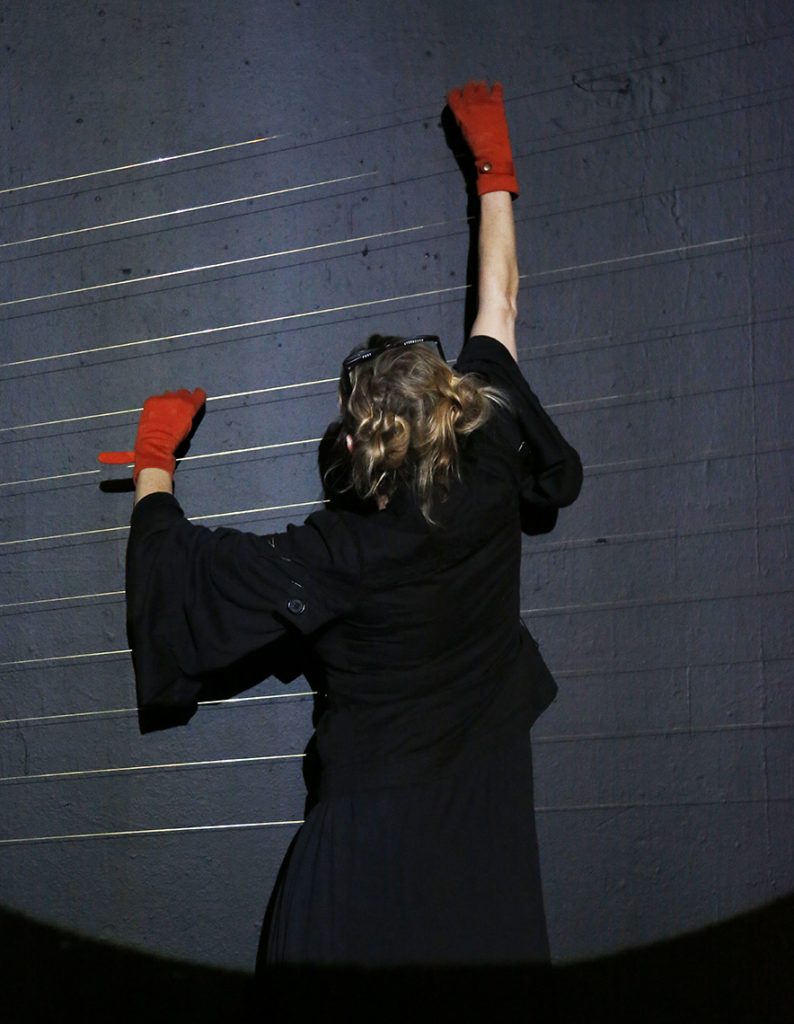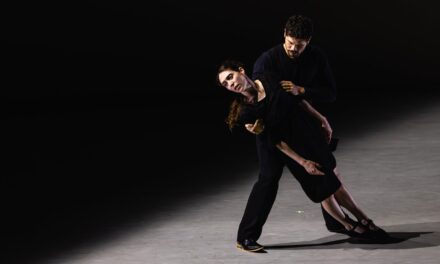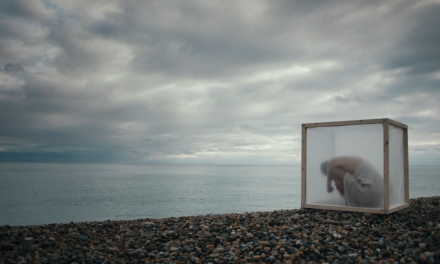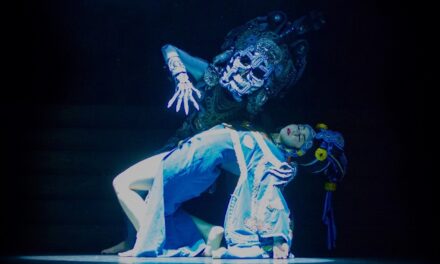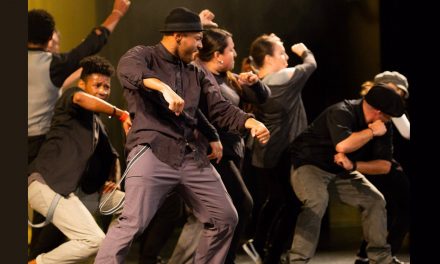Local supergroup String Theory stepped onstage at The Odyssey Theatre last night with a landscape fit for the Old West; their “Landscapes and Layers” began with a blowing wind and a cast of tumbleweeds. As the band (Holly Rothschild, Luke Rothschild, Danny Moynahan, Robert Amjärv, Vivek Maddala, Juli Pusch, Gavin Salmon) took their places, the tumbleweeds morphed into a company of dancers (Genevieve Carson, Lavinia Findikoglu, Genna Moroni, Andrea Sobke, Carissa Songhorian) costumed by Shpetim Zero in faux corsets and primed for movement.
Stunning projection design and content from Robert Amjärv and Jim Fetterley gracefully established sepia tones and cowboy culture. The band eased into a delicately composed saga, each phrase painting the Old West across the stage. Complete with haunting harmonies and cleverly chronicled folktales, they laid out a flawless scene for the five dancers—except that with a full setup of string instruments (some particularly large), the company was left with very little room to move.
Findikoglu and Sobke grappled with lack of space the most, their elegant long limbs confined significantly by the equipment obstacle course. Moroni stood out among the five, deliberate and thoughtful with each movement. Strong and sure, she grounded herself in the music rather than surrendering to the circumstances and shrinking into the set. The other four dancers succumbed a bit more to their restraints. Hesitation showed itself in the form of a reversion to student habits, slightly mechanical and unsure, and rushed ahead of the music. Holly Rothschild’s choreography featured shining moments of brilliance peppered into vague and untidy choreographic clichés that filled time.
In one beautifully animated tableau, Rothschild placed all five dancers at the top of the stage, rippling in unison, for several minutes—it was here that they hit their stride and listened to the breath of the music. The imagery was methodical and hypnotizing, and I almost wished she had put this number at the top of the show, to let the company synchronize and meditate together before launching into disjointed exercises.
Dancers had difficulty connecting movements and movement phrases, making the piece seem more like a set of class combinations than a rounded composition. And in their focus on the choreography and the space, they lost sight of the music—with this critical connection broken, it was much more difficult to digest the work as a collaborative one. Perhaps the rehearsal time with both band and dancers was limited; perhaps stage blocking wasn’t afforded the proper attention.
In any case, the choreography didn’t quite carry the Old West theme. And in this era of resurging dance theatre, it seemed a waste to neglect the score’s poetic lyrics. The dancers were a corps rather than a cast of characters. Even when assigned spoken text, they were a company at work: in need of direction, agency denied.
The band, however, was simultaneously nostalgic and innovative, perfectly imperfect and demonstratively experiencing the joy of performance in Luke Rothschild’s compositions. Their dynamic offered the feeling I was looking for in the work of a collective, leaving the audience fulfilled after a fragmented evening.
“Landscapes and Layers” had promise and vision but wanted rehearsal time and more space; I hope to see future iterations with a refined focus.
Written by Celine Kiner for LA Dance Chronicle, January 13, 2020.
To visit the String Theory website, click here.
Featured image: String Theory – “Landscapes and Layers” – Photo by Larry Hirshowitz

